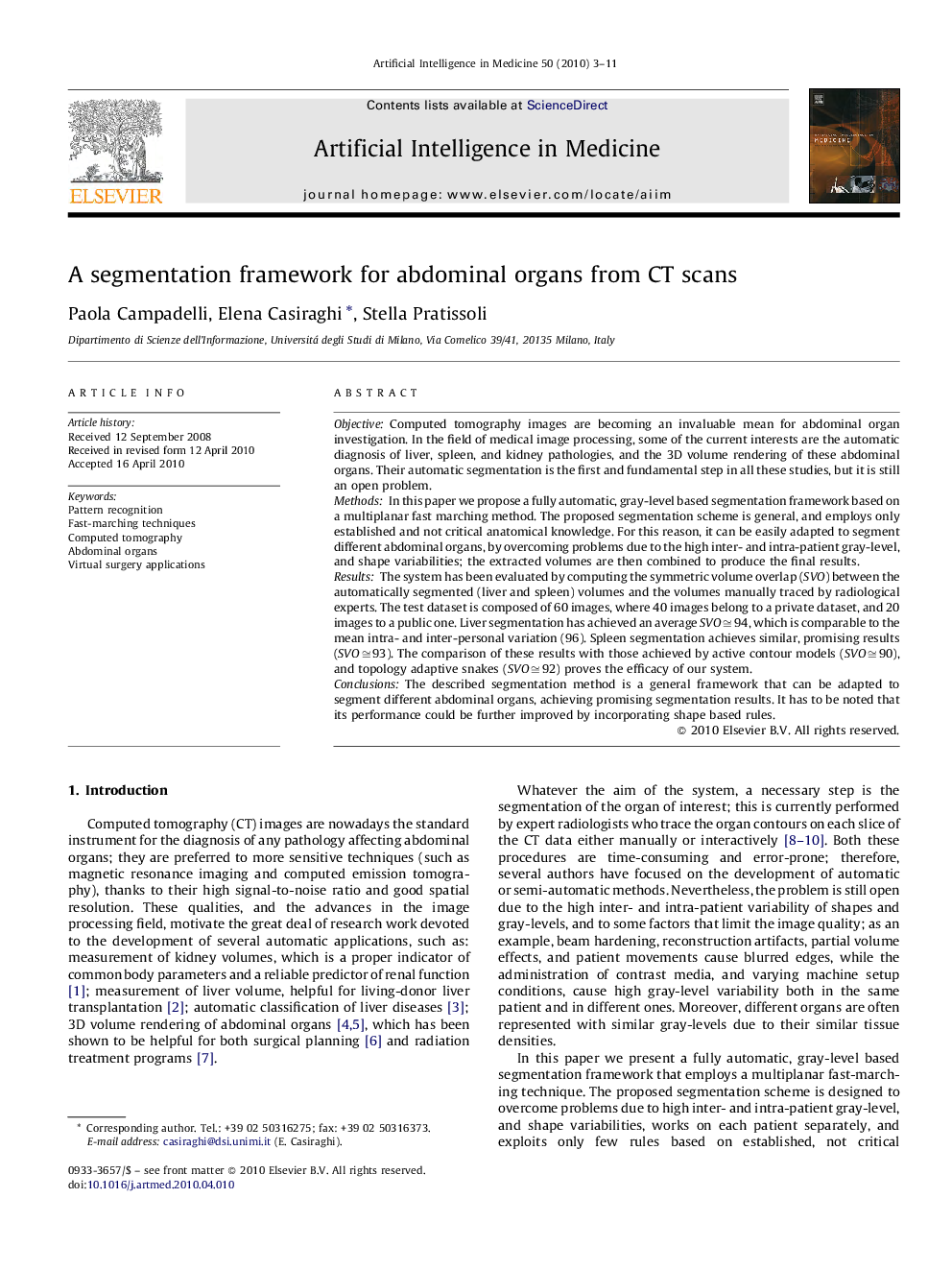| Article ID | Journal | Published Year | Pages | File Type |
|---|---|---|---|---|
| 377820 | Artificial Intelligence in Medicine | 2010 | 9 Pages |
ObjectiveComputed tomography images are becoming an invaluable mean for abdominal organ investigation. In the field of medical image processing, some of the current interests are the automatic diagnosis of liver, spleen, and kidney pathologies, and the 3D volume rendering of these abdominal organs. Their automatic segmentation is the first and fundamental step in all these studies, but it is still an open problem.MethodsIn this paper we propose a fully automatic, gray-level based segmentation framework based on a multiplanar fast marching method. The proposed segmentation scheme is general, and employs only established and not critical anatomical knowledge. For this reason, it can be easily adapted to segment different abdominal organs, by overcoming problems due to the high inter- and intra-patient gray-level, and shape variabilities; the extracted volumes are then combined to produce the final results.ResultsThe system has been evaluated by computing the symmetric volume overlap (SVOSVO) between the automatically segmented (liver and spleen) volumes and the volumes manually traced by radiological experts. The test dataset is composed of 60 images, where 40 images belong to a private dataset, and 20 images to a public one. Liver segmentation has achieved an average SVO≅94SVO≅94, which is comparable to the mean intra- and inter-personal variation (96). Spleen segmentation achieves similar, promising results (SVO≅93SVO≅93). The comparison of these results with those achieved by active contour models (SVO≅90SVO≅90), and topology adaptive snakes (SVO≅92SVO≅92) proves the efficacy of our system.ConclusionsThe described segmentation method is a general framework that can be adapted to segment different abdominal organs, achieving promising segmentation results. It has to be noted that its performance could be further improved by incorporating shape based rules.
